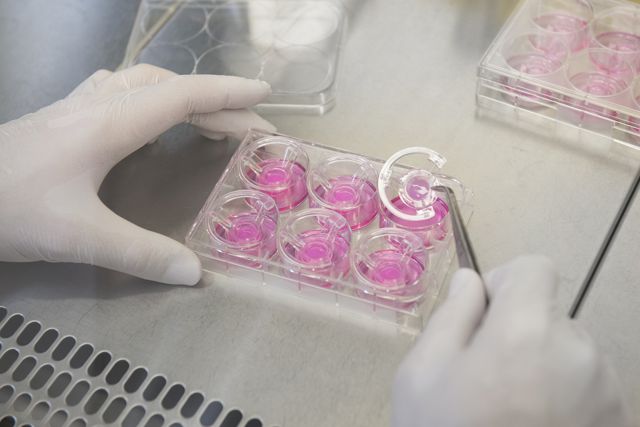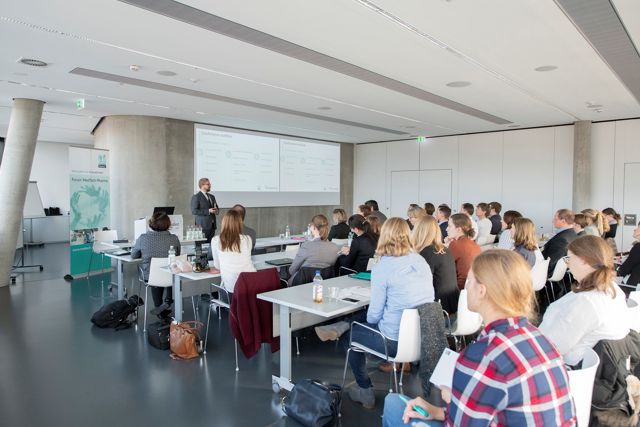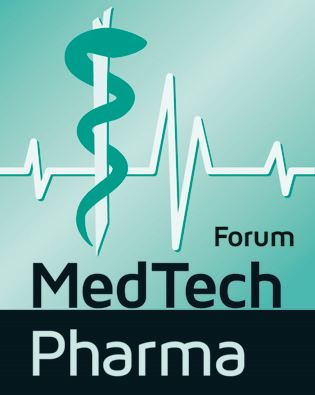New ways to avoid animal testing –
Human 3D Tissue Models Conference in Würzburg



Around 60 international experts met on November 7 at the Fraunhofer Institute for Silicate Research ISC in Würzburg to report on the state of the art in the field of 3D tissue models and prevention of animal experiments in the development of pharmaceuticals and medical devices. The Forum MedTech Pharma and the Fraunhofer Translational Center for Regenerative Therapies TLC-RT had invited to the conference, which is scheduled to take place annually.
The development of new active pharmaceutical agents and products is a tedious and time-consuming process. The drug candidates must be repeatedly tested in animal studies, on the one hand to demonstrate the general efficacy against a disease and on the other hand to determine the possible side effects. In addition to the ethical concerns about animal experiments, it is also repeatedly shown that not all the results are transferable to humans. Up to 85% of the drug candidates evaluated in the preliminary investigations prove to be unsuitable for humans in the clinical trial phase. These failures increase the cost of drug development and cause animal experiments, which subsequently prove to be pointless.
The necessary animal experiments should be kept to a minimum and at the same time the predictive capability of the test systems should be increased, last but not least to avoid costly failures. Therefore, alternatives have been sought for a long time in order to be able to use ethically less problematic and more reliable test systems, at least in the early stages of drug development: in pharmaceutical drug screening. In 1959, the British scientists William Russel and Rex Burch formulated the 3R principle as the principle of experimental scientific work. According to that animal experiments should as far as possible be replaced by other methods (Replacement), the number of animals reduced (Reduction) and their suffering minimized in the experiments (Refinement). With the European Directive 2010/63 / EU for the protection of animals used for scientific purposes, the internationally recognized principle of the 3R received in 2010 for the first time also a legal recognition. According to the Federal Institute for Risk Assessment, the regulations of the European Directive and thus also the 3R principle were implemented into German law in 2013 with the amended Animal Welfare Act and the Animal Protection Laboratory Animal Ordinance.
At this year's annual "Human 3D Tissue Models" conference, about 60 international specialists met in Würzburg at the Fraunhofer ISC, who are committed to research for the 3R principle. "Medical devices require more and more clinical trials under the new Medical Device Regulation, and here, as in drug discovery, the human 3D tissue models could also bring great benefits, and the conference should provide a platform to exchange across ˈthe industryˈ", commented Dr. Monika Muegschl-Scharf, responsible for the conception of the event at the Forum MedTech Pharma.
Among other things, methods were discussed with which the uptake of active substances in cell tissues can be investigated and different active substance modifications can be tested for their bioavailability. Great interest has also been shown in the various developments of cell-based 3D test systems, which realistically represent the construction of organs "in the test tube" (i.e. "in vitro"). Dr. Florian Groeber-Becker, Head of In Vitro Test Systems at the Fraunhofer Translational Center for Regenerative Therapies TLC-RT at the Fraunhofer ISC Würzburg and co-organizer of the conference presented as an example skin models developed at the Fraunhofer TLC-RT and already used for preclinical drug screening avoiding animal testing: "As a great advantage over classical animal experiments, human models can be generated via tissue engineering, which allow a highly accurate statement about the effects of therapies. In addition to healthy models, pathological conditions can also be simulated using a variety of methods."
First examples of the relatively new field of application for tissue models in medical device testing were elucidated in two lectures at the end of the conference. The experts agree that animal testing can not be completely replaced at the present time, as they offer the only possibility, active ingredients or e. g. to test new materials for dental and bone implants in a complex organism – yet. But scientists are also researching in this direction. More and more complex test systems are built in vitro from living cells, which combine several organs in a three-dimensional lab-on-chip system. "Overall, the conference showed that the topic of alternatives to animal testing is now also an integral part of the development of medicines and medical devices," said co-organizer Groeber-Becker. In the foreseeable future, it will perhaps be possible to avoid the last animal tests that are still needed, while at the same time improving the reliability of the forecasts for efficacy and side effects.
>> Read more about MedTech Pharma.